#fakelore
Text
Inside of you are two wolves.
Both of them were made up by anti-gay evangelical preacher Billy Graham, then falsely ascribed to indigenous people in a bid to erase actual native traditions and replace them with Christianity.
31 notes
·
View notes
Text
Sorry if this is a hot button topic, but also… I don’t really care. I’m tired of seeing her appear in my tags that have nothing to do with her. Believe what you want, I won’t stop you. Just don’t call her something that she isn’t.
#Gaelpol#elen of the ways#lady elen#deer goddess#goddess elen#deer woman#debunking#fakelore#decolonisation#deities#mythology#celtic paganism#irish paganism#polytheism#iripol#celtic mythology#resource#elen deity#elen goddess#right relationship
10 notes
·
View notes
Text

A tree described in James W. Buel's "Sea and Land" and among a handful of carnivorous plants. Like the other flesh-eating vegetation of the book, the yateveo is a sample of a hoax legend.
#BriefBestiary#bestiary#digital art#fantasy#folklore#legend#hoax#hoax folklore#fakelore#yateveo#ya-te-veo#monster#monster plant#man-eating plant#man-eating tree#tree monster#james w. buel#sea and land
50 notes
·
View notes
Text

An illustration of the Piasa by Timothy Ladd, possibly based on an earlier drawing by William Dennis, printed in A Student's History of Illinois by George W. Smith. "Piasa" is the name attached to a fantastical creature depicted in Native American pictographs in what is now Alton, Illinois. That artwork is long gone, and the accuracy of this recreation is questionable. The "old Indian legend" of this monster, the "true story" of the discovery of a bone-filled cave that might corroborate the legend, and even the name "Piasa" may be later inventions.
18 notes
·
View notes
Text
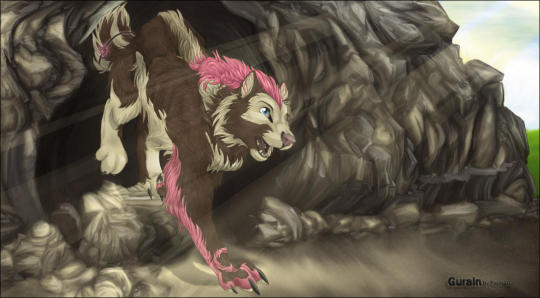
Gurain -Trade by Fakelore
14 notes
·
View notes
Text
Happy Midsummer. Me? I'm in the states and didn't even have the wherewithal to take the day off.
However, in celebration, have this (already broken out of paywall) article about fake folklore used as horror elements (fakelore) by a guy whose Swedish podcast I listen to.
https://archive.is/20211028120839/https://foreignpolicy.com/2021/10/28/scandinavia-horror-films-midsommar-folklore/
0 notes
Text
Fakelore
Fakelore or pseudo-folklore is inauthentic, manufactured folklore presented as if it were genuinely traditional. The term can refer to new stories or songs made up, or to folklore that is reworked and modified for modern tastes. The element of misrepresentation is central; artists who draw on traditional stories in their work are not producing fakelore unless they claim that their creations are real folklore.
https://en.wikipedia.org/wiki/Invented_tradition#Fakelore
1 note
·
View note
Text
*looking up from the pear wiggler, where a tiny Mizuchi Miyadeguchi is being thoroughly wiggled*
This is therapeutic for her. I majored in psychology.
29 notes
·
View notes
Text

#mythology#myths#art#legends#lol#slavic mythology#slavic#cherry#god#cherry god#fakelore?#i dunno but he is very important to me#oh great kirnis#i love cherries#may he continue to do his job#perun bless
98 notes
·
View notes
Text
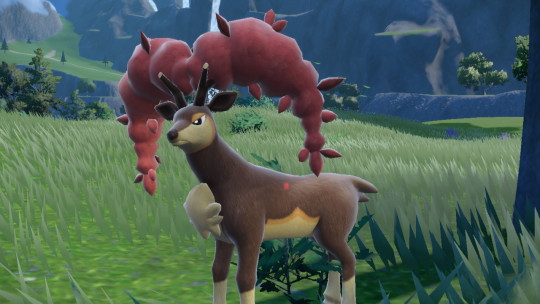
Sawsbuk were once thought to change with the seasons, however more recent studies point to them being simply extremely quick to adapt to local climes.
In more stable regions you can find them in different levels of bloom more depending on how warm it is or even the elevation.
This Summer Form kept an eye on me, making sure I wasn't going to be any danger to the deerling under its protection.
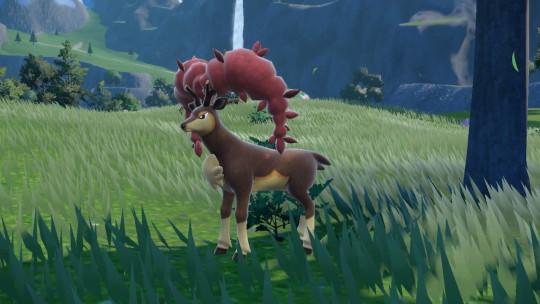
I didn't desire to cause it any more stress so I gave it its space. Stantler are gentle creatures and won't attack unless provoked.
The regional varient of such a creature in my home region is part steel type, and quite aware that it can go wherever it pleases. In the city. Might say it's bold as brass, and it will eat your begonias.
Luckily they're not clever and people will put fancy statues of them in their gardens to make the Sawsbuck think that this territory is taken by a much bigger, stronger and flashier sawsbuck.
Sometimes they try and fight it, at which point you have a knocked out sawsbuck.
#pokemon professor#pokemon#sawsbuck#paldea#pokemon headcanon#pokemon fakelore#professor mystic#unreality#pokemon scarlet and voiolet#pkmn#pkmn scarvi#pokemon scarvi#scarlet and violet#pokemon scarlet and violet#pokémon scarvio#paldea region
27 notes
·
View notes
Text
fakelore -> tdedy. we’re back folks
4 notes
·
View notes
Text
data hoarding may not be a great habit and mindset
but also ive spent the last hour poking around my 3 external drives ive used over the years and im finding shit i forgot about and other stuff i believed lost forever
#its such a great feeling#apparently when first trying to list and define proxy fiction i used the term 'fakelore'#found an old rip of a youtube video that likely never broke 1000 views but was very influential on me#and seems to be gone now so its cool that i have a copy#photos i took in lithuania and russia years ago#the uh (looks closely)#demo to the Atlantis The Lost Empire PC game?#plus all the shows and movies i pirated in college#the archivist part of us is extremely pleased with some of these findings
3 notes
·
View notes
Text
don’t think i reblogged anything here but the goncharov meme has me thriving to be quite honest
0 notes
Text
Since there's somebody on this site insisting that Lilith should be considered open again, I'm just gonna mention that I have never seen an argument in favor of considering Lilith an open deity that didn't rely on a massive misunderstanding of ancient Mesopotamian beliefs, effectively blame Jews for patriarchy within Christianity, or appeal to fakelore from the Internet. Like if there's somebody out there who can make a compelling argument for why Lilith should be considered open without appealing to some kinda bullshit and is also Jewish I'd be happy to hear them out, but until such a person can give me a good reason to do otherwise, I'll be siding with the Jewish folks who considered Lilith closed.
121 notes
·
View notes
Text
DFF, Found Footage, Technology, and the Real
Okay so I've been slowly looking into horror and technology since watching Shadow, and now DFF has me going down a related research spiral. So let's call this a sibling post to my Shadow technology series (which I am slowly working on I promise).
I just thumbed through a great book on found footage horror and a few other pieces on technology and wanted to use these as a lens to think about DFF and how it's navigating a number of themes including the distinction between reality and fiction.

DFF draws on the concept of found footage films like The Blair Witch Project. Even if DFF's main framing and style isn't found footage, the film the characters are working on is. And we get our most direct reference to a horror film when Jin references The Blair Witch Project--an iconic found footage film. So I want to start by thinking about the Blair Witch Project.
Part 1: The Blair Witch Project and DFF
Part 2: Paranormal Activity, DFF, and the Myth of the Real
Part 3: Films within Films, Surveillance Technology, and Other Connections (Man Bites Dog, Cabin in the Woods, Shutter)
Part 1: The Blair Witch Project and DFF

While found footage horror doesn't purely originate with the Blair Witch Project it certainly rocketed the concept into the popular zeitgeist. I watched the film for the first time this week, and while it didn't scare me*, I could easily see how influential it would've been at the time. The media landscape looked very different in the late 90s, and the film's marketing deliberately played up the idea that this was real footage in a way that simply couldn't be done today with our current media landscape and familiarity with the found footage genre. We're now much more familiar with fakelore as a concept in general.
*The scariest part of watching was the censored subtitles! Stop that please! They seriously were replacing things like "Oh, fuck" with "Oh, boy." I also got a car add about going out to enjoy national parks, and how they can be accessible to Deaf people, which was an interesting moment of double irony.
In her book Found Footage Horror Films: Fear and the Appearance of Reality, which I will be citing quite a bit in this post, Alexandra Heller-Nicholas notes that the Blair Witch Project came out at a time when amateur films were still relegated to home videos but entering public viewing through shows like America's Funniest Home Videos. The style was thus associated much more closely with trying to capture reality than tell a fictional story. The marketing played into this heavily--for example: using the actors' names for the characters, circulating missing persons flyers in areas where the film was being shown, and creating a website that gave background on the Blair Witch myth and information on the "missing" trio of amateur filmmakers. I chatted a bit with @slayerkitty who saw it in theaters. She explained how part of what made the film scary at the time was how real so many people thought it was and the tension of being in the audience.
TBWP and DFF Similarities
Let's start by going over some of the ways DFF might be directly pulling from the film or making homages before jumping into what I think are probably the more significant thematic connections with found footage.
Myths and an Ambiguous Antagonist:

The Blair Witch Project is set against the backdrop of a local myth about a witch in the woods. Three young adults (Heather, Josh, and Mike) go to make an amateur documentary about the witch, get lost in the woods, and are then hunted by an unseen presence. We get information about the myth through interviews with locals and a book Heather reads aloud briefly called The Blair Witch Cult. We learn about the slaughter of 5 men (which is described almost like a ritual), disappearances and deaths, and a man who was compelled by the witch to slaughter children. Similarly in DFF we have our Janta cult, which slaughters people in the name of a supernatural or spiritual force. Now I'd say this could be a nod to TBWP but it also draws on plenty of other ghosts stories and urban legends about the woods. I'm sure there are also particularly Thai valences as well beyond just being Buddhist on the surface.
Like the trio in The Blair Witch Project, the group in DFF goes into the woods to film--though they aren't traipsing through the woods, and the horror they're filming is a story of their own creation. In the present, however, the horror becomes much more than fiction, just like in TBWP. In the film, we see and hear signs that something or someone is following the trio but it's ultimately unclear if it's supernatural, locals scaring them, or them slowly cracking and turning on one another. In DFF's opening episodes it's likewise unclear if what's happening is being caused by a person, hallucinogens, or something supernatural.
Maps and Marketing:

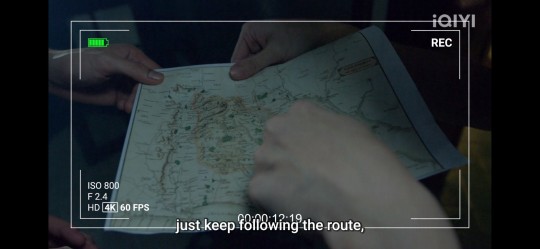
TBWP also shows the characters turning on one another, arguing, and cracking in a way that fundamentally sabotages their survival. At one point, Mike reveals that he threw their map, their only lifeline, into the river. This is paralleled in Fluke turning away their transport and means of leaving. The map is an important focus in the film. We see Heather orienting the group and insisting she knows where they're at, while Mike insists they're lost. This culminates in them losing the map as things start getting worse. DFF slips in what I read as a potentially more direct reference to the film in episode 8. An odd new detail in the group's film where they rely on the hope of a map to get out before they're attacked by the masked killer again.
Another potential similarity to draw on has more to do with the outside marketing of TBWP. Interestingly it was marketed to appear like an indie film despite having pretty extensive funding. This makes me think of the group's film in DFF. This is meant to be a student film but they received a huge boost via Por's dad giving them extra money for a camera.
Smoking and Being Alive:

One other parallel I find interesting is the emphasis on smoking. To be fair TBWP is probably not the first or last horror film to have people smoke (the pot head is a character trope of it's own), and I was likely primed to notice because we already had "Tan smokes and has asthma" on our list of clues for DFF. Now clearly the writers of DFF are smart and are using Tan/New smoking in plot relevant ways. These details feel purposeful to the story they're crafting. But let's briefly look at how smoking shows up in TBWP.
The characters all smoke and drink alcohol. As they get lost and the days tick away they run out of food and smokes. Josh has moments that could be attributed to withdrawal where he laments that they're out of cigarettes. However, after he disappears, Mike finds some remaining cigarettes at the bottom of one of their bags. Mike comments "We're still alive cause we're smoking." For him, it signals even if briefly that they are still alive, that they're surviving.

But in DFF, smoke seems to be attached to death and dissociation. We know that New is a smoker, something he perhaps picked up in England. It starts then as a sign that he has a life, one outside of being Tan. Yet it's that very life, being abroad, that led him to be so far from Non when he disappeared. For New, his life is now tinged with guilt and loss. As @syrena-del-mar noted here, there are moments where he forgets he is supposed to be New. But the smoking becomes his one reminder that "New" is still alive.
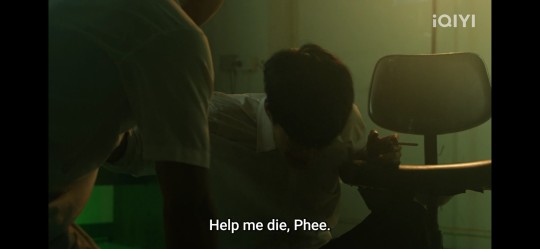
Yet this reminder turns more and more painful. Under the exterior of Tan, he is haunted by New, the brother who didn't make it in time. And this spirals further when his mother and father die. Each time he's a step closer but still too distant to stop their deaths. At this point, he starts getting high to a dangerous degree--dissociating, hallucinating, torturing himself with visions of Non. When Phi steps in we have a parallel moment to Phi stopping Non from taking pills. Smoking turns from a sign of life to one of death as New tries to commit suicide, telling Phi "I don't want to live anymore." And New takes this further when he drugs the rest of the boys. Perhaps he didn't intend it to go so far, but he certainly is happy with the result. His drugs, his smoke have caused fear and death, rather than hope and life.
Except for the map I feel like most of these parallels can as easily be chocked up to direct inspiration as they can be attributed to both pulling on a similar well of genre conventions. What I find more interesting is the thematic conversation TBWP brings to the table for DFF.
TBWP and Thematic Resonances with DFF
Filtered Reality:
In her work on horror, Brigid Cherry remarks that The Blair Witch Project is "about the way in which technology gets in the way of seeing" (qtd in Heller-Nicholas 23). Heller-Nicholas further notes how the camera is constantly in contention with the audience's desire to look at what we want to see. In the film itself, one of the characters even remarks that looking at the world through the camera is "like a filtered reality" because you "can pretend everything isn't exactly like it is."

This looking but not seeing resonates to me with Jin. He looks at Non through the camera, seeing him as innocent, in need of protecting. But there's so much he doesn't see about Non, including the reality of poverty. Jin's perfect view of Non breaks at the moment he sees Non with Keng. But as Jin's filtered vision of Non cracks, he adds a new filter. He frames Non as a slut, someone guilty in his mind, at least in the he heat of the moment. So he records him. In doing so, he papers over the nuances of the situation, that it is SA and that there is so much of Non's life that is outside of Jin's lens.

After Non's disappearance Jin doesn't stop using his camera lens to view the world. In episode 9, he watches the others play soccer and then Phi through his camera. He is pretending nothing happened just like the rest of the group, but for him to do that he has to filter his reality. And just like with Non, Jin isn't able to see the full story around Phi from this small frame of a perspective.

I also think it's worth noting how the show, especially in the flashbacks tends to use strong framing (I note some of this in episode 5 but it persists strongly at least up until episode 9). While they aren't using a found footage style, there's still a sense at times that the camera is limiting our view as it closes in around the characters. It's as if the camera frame becomes hyper-visible, similar but not exactly like in found footage. I'm not entirely sure how to read this just yet, but it feels appropriate for both a mystery and for a story so deeply invested in perceptions. There's a strong focus on what is made visible and what is rendered invisible by the characters, by the story structure, and by the frame of the camera itself.
Gender, Space, Control:
In her discussion of TBWP, Heller-Nicholas discusses the gendered dynamics of the film and how scholars have read the film as invested in the horror of female control. This is captured in two ways. First in the way the woods as a space become imbued with the horror of the Blair Witch (pulling on a tradition of witches being women), and thus the feminine. Second, in the way that Heather, who is the director of their film, leads the group to folly. Scholar Linda C. Badley, has argued that "Heather represents a serious breach in having taken possession of the conventionally male--and often murderous--gaze" (qtd. in Heller-Nicholas 108). Heather thus enters the domain of the typically masculine and the results are disastrous.
I find it interesting to compare DFF with TBWP in this respect because they've taken a genre that often is infused with binary gender dynamics and given us all men, and predominantly queer men. This is obviously a dynamic of BL, but it's interesting to consider how this plays with the themes of gender that often proliferate in horror. This is a much broader topic, and @brifrischu and I are currently reading through Carol Clover's seminal work Men, Women, and Chainsaws so I wager we'll have more to add to the discussion at some point.
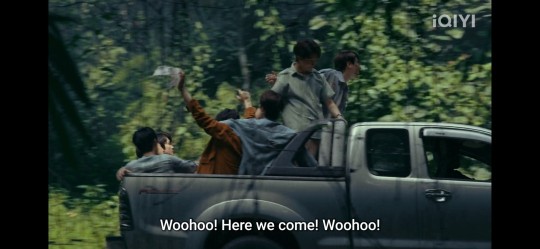
But let's look at a few things. First, if the Blair Witch imbues the woods as a space of feminine horror, DFF paints the woods as masculine. After our cold open, we are introduced to the group as they ride into the forest via Por's narration about the legend of Janta. The subtitles at the very least, refer to Janta using masculine pronouns. I don't want to assume that Thai gender coding and dynamics are identical to western ones but we might consider the way that the group of boys, packed into the back of a truck paint this as a masculine, homosocial space.
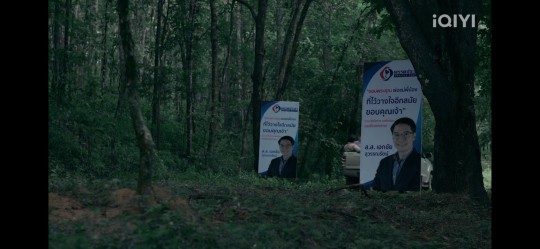
This is reinforced by the mention of Por's father. Por says "My dad warned me that, so I had to listen to him." This masculine authority is doubly highlighted by the campaign posters that literally mark his control of the space. To go any further the group must pass through these signs as a threshold to the space. Here we have not just masculinity being signaled but wealth, power, and control--something that contrasts distinctly with Non, for example, who has none of this. And of course, as we move through the story much of the horror comes from the actions of the core group of boys rather than the masked person we started with.
I find it interesting too that as Por tells the tale, it's White who comments "You almost had me scared." They then have a discussion about Tee liking to teaser "the younger ones." This focus on White as the most vulnerable is interesting given that he reads as perhaps the least traditionally masculine of the group*.
*Another reason why I'm excited to read Clover's work, is because she came up with the final girl formula in her discussion of gender in horror. I'd love to think about how we apply that in a queer context, especially given how so many of us have collectively felt White will be final girl. What might DFF be doing re: gender within the context of queerness, and what might it be asking of us as an audience?

The second aspect of this is the directorial gaze. In TBWP we have a woman taking on the control of a film project. This is important not just because Heather takes on a typically male profession but also because of the way films are imbued with what Laura Mulvey has termed "the male gaze." The view from which we see the world and the terms on which stories are told are traditionally male, while women are objects to be looked at--something Heather bucks and is punished for.
In DFF we have a similar struggle over authorship and directorial control. Instead of a strict division between feminine and masculine gazes, we get a struggle that is imbued with distinctions of class first and foremost. Por stands in as the more traditionally masculine director. We see the violence he does in trying to maintain control of the project. Of course he mostly does this through exerting his wealth. In contrast, Non doesn't fit the more aggressive masculine role, he comes from poverty, has mental illness, and is generally at the bottom of the social pyramid. His authorship comes into tension with Por's desires for directorial and social control.
There's a strong thematic exploration here of not just who gets to tell the story, but who's story gets to be told. In the end, the camera is Por's, his wealth and framing win out, and Non's authorship is buried. Much like the male gaze relegates women to objects rather than directors or authors, the only film that Non gets credit for is the sex tape in which he becomes objectified by the camera.
Of course we then have the fact that, in the present, Non's revenge script is being played out. There's a new director here, and clearly it's not entirely Phi (who tries his hand at directing in episode 1). Regardless of who is orchestrating these moves, we have an inversion of power happening. While we can't say for sure until the show has wrapped up, I suspect that DFF will lean into this inversion, rather than, like in TBWP, punishing this transgression of the norm.
That's all for now on TBWP, but certainly not all on DFF. I'm going to turn now to another important found footage film, Paranormal Activity, to unpack a bit more about DFF and it's themes.
Part 2: Paranormal Activity, DFF, and the Myth of the Real
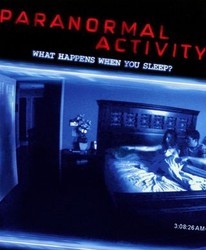
In her work Heller-Nicholas notes how, after Paranormal Activity hit the screen, our view of found footage as a genre shifted. It was no longer seen as necessarily authentic per-se but a stylistic form. Heller-Nicholas puts it like this:
As these more popular found footage horror films made their way to the forefront of the genre, what became important was not that the audience necessarily believed that they were real, but rather that they offered a framework to knowingly indulge in a horror fantasy of the real. The solidification of a recognizable found footage horror style meant that horror audiences understood and identified them as such, defining a subgenre where an authentic style (rather than claims of authenticity itself) prevailed
(Heller-Nichols, 128)
I won't go into smaller parallels between the film and DFF (partially because I haven't seen it, so if you have please add anything you notice), but I want to cover a few thematic resonances.
Heller-Nichols sketches out a few ways that critics have interpreted the film. First, as an allegory for materialism in the context of the US housing market crash of the time. Second, as a reflection on surveillance and the way changes in technology changed our relationship to cinema.
The first theme, materialism and consumption play out in the film through both the financial disparities of the characters and the more metaphorical spiritual/demonic possession that takes place. Both DFF (at least episodes 1-4) and Paranormal Activity take place in a luxurious house and themes of greed and materialism are present. In DFF, Por takes this role, flaunting his wealth and using it to get what he wants. Of all the characters, he is the one most willing to steal credit from Non. In Paranormal Activity the wealthy boyfriend even brags about buying a nice camera on only half-a-day's pay. Similarly Por brags about getting the nice camera for their film with his father's money.

One thing that set Paranormal Activity apart from earlier found footage films like The Blair Witch Project, was it's use of security camera footage. It relied on a new type of gaze that made the private public in the context of shifting surveillance technologies. While DFF largely centers itself around a film camera, it also includes other forms of technology in the background, including surveillance cameras. The CCTV cameras in Por's house come to mind as a significant way this technology comes into play. On the one hand, it helps Por identify that there is an intruder, and it helps the group find him when he is hurt. On the other hand, it encroaches on the private, capturing White and Tee having sex. This private vs public line is of course horrifically crossed when Jin records Non and Keng and when this video is circulated--surveillance right in our hands via cell phone.

Heller-Nicholas notes that post-Blair Witch, and by the time Paranormal Activity was released, audiences were much more genre savvy. She notes that the genre's "pleasures are not reliant on our gullibility, but rather our willingness to succumb to the myth of the real that these films offer..." (26). Relevant to DFF, I want to stress the "willingness to succumb to the myth of the real." I discussed earlier how Jin doesn't see Non; instead, he is happy to succumb to a myth of what could be the real Non.
But it's not just Jin who does this. Almost everyone around Non believes they see him correctly--as "Greasy", as a bad son, as a cheater, etc. This takes on even more public dimensions as the police enter the picture, as the sex tape circulates, and as the police report that he has run away with Keng. What people see and believe about Non, the narratives they tell about him, help reinforce people's existing understandings of the world--their prejudices, their assumptions, their myths of how the real world works.

And of course, film is at the center of this. The police believe that Non wasn't with the group when he disappeared because any footage he was in was hidden from them. Non is erased from the film (both in the footage and in terms of credit). The entire film premier is one big moment where everyone in the group is playing into this myth. It is taken as fact that Por's name being in the credits means this is his work--that nothing or no one of note was hidden behind the frame.
In her work Heller-Nicholas points to discovered manuscript fiction (such as Dracula) as a precursor to found footage horror. This connection highlights the way these works rely on the fiction that someone has organized the documents apart from the original author. The fictional framing of found footage as pretending to have an original author or filmmaker other than the actual director, hides the fact that The Hidden Character has in many ways literally stolen credit from Non. The genre expectations obfuscate the real story.
And then there's the sex recording (the only film Non gets credit for). We see a number of reactions to the recording from people in Non's life as well as those outside of it. The social media posts in particular stress the way Non's vulnerability is quickly slotted into pre-held narratives of sex and sexuality that refuse to see the reality of SA.
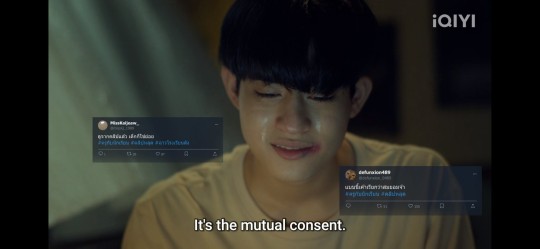
Non's SA is taken as truthful evidence of his consent via social media, while the film the group made is found footage but not seen as real. I think this marks an interesting change in the aesthetics and narratives we find "real." Horror and found footage are legible, a chance to engage in "a fantasy of the real". Meanwhile, the real story behind the film is erased, just like Non. Sadly, the most legible narrative of a young queer boy is that the phone footage is slutty or even hot. No one questions the authenticity of the recording, it is viewed as real. Ironically, compared to the horror film the group shoots, the sex tape is the real found footage film. Yet the "reality" it shows is filtered through interpretation. Non's reality gets buried.
Meanwhile, as an audience, we have the opposite reaction. We are slowly given insight into the discrepancy between Non's reality and the myths people hold. We keep asking why other characters can't or won't see the truth, why they won't help Non until it's too late.
DFF may not be found footage itself, but it is certainly interested in exploring and extending the thematic conversations about authenticity, reality, and narrative.
Part 3: Films within Films, Surveillance Technology, and Other Connections
Despite the fact that DFF references and dialogues with the found footage horror genre, it formally has more in common with films that center around technology and films within films. So I wanted to cover three more films that I think dialogue in interesting ways.
Man Bites Dog:
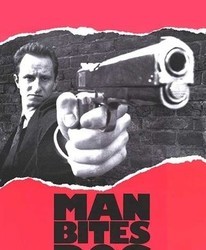
I'll start with Man Bites Dog since I have the least to say about it. It is a 1992 French mockumentary and black comedy, that Heller-Nicholas notes is a pretty significant and well-acknowledged precursor to the found footage horror genre. I'm not sure I want to get to deep into themes with this one. But I thought the parallels were interesting. A film crew decides to make a documentary where they follow a serial killer named Ben around only to be pulled into the crimes and become culpable themselves. That is, until Ben is killed and the film crew are taken out one by one by an unknown killer. We have a film crew that slowly gets involved and more culpable in wrong doings, just like in DFF we have the group working on a film while slowly becoming more and more culpable in harming Non. Meanwhile in the present both "film crews" are suddenly being hunted and picked off by an unknown party.
Cabin in the Woods:

Cabin in the Woods is a 2011 film that satirizes horror. A group of college students go to a cabin in the woods and are slowly picked off. The twist is that this is all orchestrated by an organization that is simultaneously surveilling and orchestrating their deaths to appease ancient deities. Many of the shots are done through drone's and other similar visuals to highlight the way the group is being surveilled. In a chapter from a collection on horror and gender, Hannah Bonner looks at Cabin in the Woods and a few other films that include surveillance and social media. She discusses the way technology in these films revolve around slut shaming young women. As she puts it, "It is the 'fact of being constantly seen', whether by high key government surveillance systems or by judgemental peers, that throws these characters into disarray or death" (89).

For Cabin in the Woods one thing Bonner examines is the way the film frames the group's "slut" character Jules. Jules and one of the guys go outside to get intimate. And the film moves between this scene and the men surveilling them who watch eagerly. Bonner reads this as a commentary on the violent gaze with which horror frames women. She makes a distinction, noting that "The voyeur is no longer just the audience, squirming in their seats from Michael Meyers's point of view as he tracks down his naked sister and her boyfriend in Halloween...now the audience as voyeur watches the voyeurs watch the surveyed" (90).
DFF makes a similar move by staging multiple instances of filming (a film within a film, or in this case a film within a show). We get a moment in episode 1 where Tee steps forward to block the group watching the CCTV footage of him and White. But this denial is in contrast to other moments. The show draws us most into being voyeurs watching voyeurs, when Jin films Non. I think it's important to note that both the moment that Bonner discusses in her chapter and this moment in DFF are sexual. In CITW, Jules is literally labeled by her surveillers as "the slut", a role she must fulfill and be killed for to appease the gods. Her lack of agency is made quite apparent. In DFF, Non is also slotted into the role of the slut by those around him, including Jin when he films the moment out of anger. While the show is not as on the nose about the whole thing, it's still clearly establishing a discrepancy between how Non is viewed by those around him due to the tape and the lack of full agency he possesses.

Moreover, by making us viewers voyeurs of this voyeurism, DFF creates a critique rather than simply a simulation of voyeurism. I am considering how this might not just be a commentary on sex shaming, but sexuality within a space where BL has historically crossed the line at times in terms of depicting SA. Or even the way that BL actors in Thailand are often expected to blur the line between the private and the public through fan service. It's interesting because clearly the show also doesn't shy away from letting us be voyeurs to sex. The show perhaps draws a distinction between representing queer sex and SA. But it's fascinating how this is mediated through voyeurism and the camera's gaze.
Shutter:
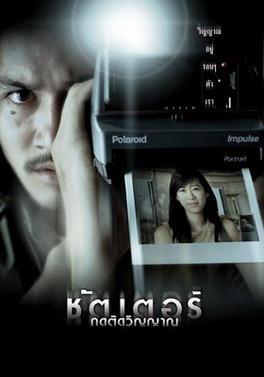
I couldn't wrap this post up without talking a bit about Shutter. Shutter is a 2004 Thai horror film (and probably Thailand's most well known horror film globally). It was part of the horror boom of the late 90s and early aughts in Thailand and Asia. If you throw Thai horror and cameras my way, I will think of Shutter. I watched it as part of some research I've been slowly doing on late 90s/early 2000s Asian horror and technology (writing meta for Shadow the series). It's a story about haunting that takes inspiration from the idea of spirit photography.

The film follows a couple, Jane and Tun, both photographers, who start seeing shadows and faces in their photos. Jane discovers that the ghost is a girl named Natre who Tun used to date in secret. They proceed by trying to figure out how Natre died (suicide) and how to get her to move on. Meanwhile Tun's friends suddenly start killing themselves. Ultimately Jane learns that Tun's friends raped Natre, and Tun not only didn't stop them but even photographed the assault at his friends' request (so Natre wouldn't snitch). Jane confronts Tun who expresses his regret, that he "never forgave [himself]." In the climax of the film Tun uses a polaroid camera to try and find Natre's ghost in real time before being driven out the window. Natre let's him live, in a near catatonic state, unlike his other friends because his betrayal hurt the most.

We once again come back to themes of voyeurism, SA, peer pressure, and culpability. The film has strong focus on the effects and betrayal of being a bystander, much like DFF does. Again this parallel is made quite strongly with Jin. Non may not have had feelings for him, but he is the kindest of the group, making his betrayal hit strongly. Jin filming Non and Keng has it's own nuances within DFF, but it certainly parallels Tun photographing Natre's assault. Similar to Non, Natre disappears in the aftermath, while Tun and his friends go on with their lives.

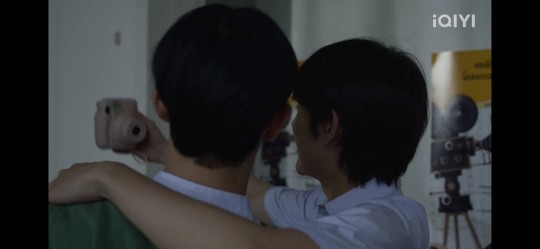
On a smaller note, both Tun and Jin use polaroids in what is potentially a reference to the film.
As the truth is revealed, Tun goes from a protagonist to a villain, and Natre goes from the horror of the story to the victim. DFF seems equally interested in the idea of how truths get hidden and justice withheld. It also gives us an inversion of the source of horror. By the time we end episode 5, the group we've gotten to know over four episodes are clearly villains in our minds, their cruelty becomes the horror rather than the masked killer who we come to empathize with (or at least root for to some degree). Now how this fully plays out in the end might shift things. But currently (up through episode 9) this is a horror story locating horror in power and cruelty rather than simply reinforcing a more conservative world view of the non-normative monster.
Concluding Thoughts
Dead Friend Forever is mixing genres in a smart and deft way. It's clear that the writers and director are well versed in horror and are ready to play with genre conventions to deliver their ideas and themes. Some of the connections I'm making here might be happy coincidence where the works speak to each other mediated by my own perspectives and interpretation. But I also believe that the show is building on themes and traditions in horror and found footage horror specifically in smart ways. From the framing of shots, to the way they deftly speak to themes of (in)visibility, power, reality vs fiction, agency, and sexuality (among others).
Through all this, DFF has been incredibly genre savvy. While found footage plays on the idea of reality, DFF shakes that up by throwing a who-done-it mystery our way. Like in The Blair Witch Project, for much of the show, we don't know what's real or what's in the characters' heads. DFF, however, picks up where TBWP stops. At the end of TBWP, the characters are likely killed off camera, the source of the horror still left up in the air. DFF gives us this ambiguity, but then pivots and makes the show a mystery to solve rather than locating the horror in ambiguity. This is because the horror lies elsewhere. Like in Shutter, the monster becomes the victim, our sympathies are played with, and we're left with a show that is as interested in social and political critique as it is in having fun playing with horror tropes.
Sources:
Heller-Nicholas, Alexandra. Found Footage Horror Films: Fear and the Appearance of Reality. McFarland & Company, 2014.
Badley, Linda. Film, Horror, and the Body Fantastic: Praeger, 1995.
Bonner, Hannah. “#Selfveillance: Horror’s Slut Shaming through Social Media, Sur- and Selfveillance.” Gender and Contemporary Horror in Film, edited by Samantha Holland et al., Emerald Publishing, 2019, pp. 85–99.
Cherry, Brigid. Horror. Routledge, 2009.
Shutter (film, 2004)
Cabin in the Woods (film, 2011)
Man Bites Dog (film, 1992)
The Blair Witch Project (film, 1999)
Paranormal Activity (film, 2007)
#i think next i want to write a piece on Tan/New and the way the show is drawing on the mad scientist sub-genre#dead friend forever#dff the series#dff meta#my posts#my meta#dead friend forever meta
79 notes
·
View notes
Text
*sigh* I have the silliest theory of all time, which is saying a lot considering what I theorize, but I’m trying so hard to figure out Jack’s birthday card

It’s been controversial, to say the least. Because RAFIKI?!? Not to clown on my boy Jack, but even though he’s very smart, he never had this special type of wisdom like Rafiki. He’s very serious, a lone wolf. I thought we would be getting a picture from the Beauty and the Beast wolves, especially considering he’s from the land of Pyroxene, even being childhood acquaintances with Vil
But since I’m getting desperate, I look at the two frames closer

We have Rafiki with the light shining behind him, and Scar shrouded in darkness. Jack is conveniently in between the two, separating the light and darkness

Then Mufasa teaches Simba about how “everything the light touches” belongs to the king. OKAY.
And there’s “that shadowy place” where the Hyenas and Scar gather. OKAY
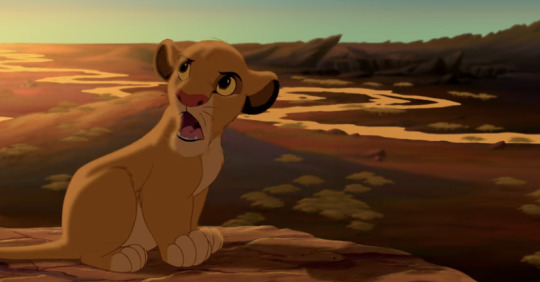
So…is TWST trying to imply that Jack is the “in between,” or the representation of “everything the light touches?” Like the dawn or twilight (stop don’t think about the vampire movies)?? Jack IS a first year, has white hair, and the first years definitely have a lot of symbolism regarding new beginnings and personal change, and they seem to be setting up their importance in the end game.
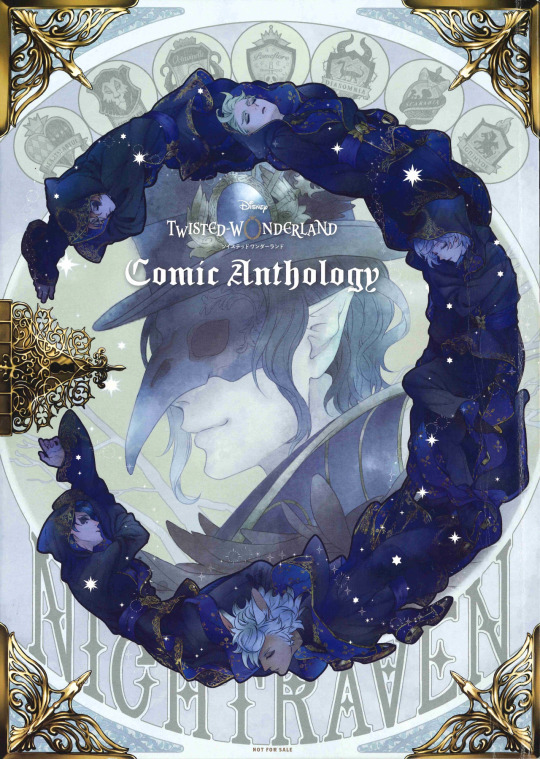
I’ve talked more about this anthology cover before, but the first years symbolism change and growth. A lot of them are discovering who they are, what their Unique Magics are…and Jack notably stood against Leona in Book 2 despite idolizing him before. And if there’s still hope for Beauty and the Beast reference, the beast quite literally goes under a transformation, just like Jack’s unique magic that turns him into a wolf. So does Jack being the “twilight” a representation of this transformation?
Still, this seems like a REALLY abstract and roundabout way to reveal Jack’s origins? Which is saying a lot considering Sebek’s and Lilia’s origins being pretty abstract.
The weird thing about this is, even though Jack has white/pale hair like Silver and Kalim, he is NOT a part of the “light trio” which is made up of Silver, Kalim, and Rook (who is blonde), supposedly because they are based of heroes instead of villains. Ironically enough, Jack has a much stronger moral compass and behaviors compared to Rook. And visually, with his white hair, he would fit into the light trio a lot better. But what makes the light trio the Light Trio is how their magic is represented with white glows instead of the standard dark magic that everyone else has- including Jack.

I tried seeing if there were any “sayings” about wolves that Jack may be based on, but the closest thing I could find was one of the Pinterest-esque quotes about two wolves, one being the light and the other darkness 😭 I mean…I suppose if you REALLY stretch it, the “grandfather” explaining the story of the two wolves in this fakelore could be Rafiki, which is why Rafiki shows up in Jack’s artwork.
Rafiki does something similar with grown up Simba, asking Simba who he was, and showing him a reflection of his father. But like the wiki page says, it’s origin is very dubious and is considered fakelore.
But this is driving me crazy because it almost made sense until I realized Jack is basically the embodiment of this meme 😭😭😭

So unless Jack is secretly Rafiki’s wolfsona
WHAT IS TWST TRYING TO SAY WITH THIS?!?
140 notes
·
View notes